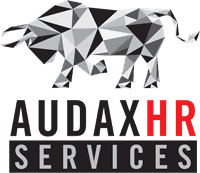To get the best possible results for your organization, collaboration is essential. Different thinking leads to better ideas and solutions. Shared experience ensures effective implementation. And no matter how high your IQ might be, you are still not bright enough to have all the answers.
Yet in my experience, making collaboration happen – especially in organizations of scale and complexity – remains a major challenge. In 2015 this is a bit of a surprise given the proliferation of e-social tools and the millennials entering the workforce. One could assume that the landscape is far more attuned to enabling great collaboration.
So what needs to happen to establish collaboration in these larger, more complex organizations?
It’s not rocket science but I have found that there is an understandable impatience to turn on the collaboration switch without having these things or thinking in place.
1. It takes culture
Before this well-developed e-social world, I worked with a partner to develop an in-house online solution to promote collaboration within a large, highly diverse and disparate HR function. It was a beautiful tool with much energy spent on making it so, including the CEO giving his time to promote the solution.
But it fell flat on its face and I wasted time, money and effort because I had not focused on the need to establish a culture that would encourage open communication and sharing. The good thing about failure is that, used to your advantage, it is a learning experience for you and your organization.
So how do you establish the right culture?
It has to start from the very top of the organization. And it’s not about words, it’s about action. Your senior leaders need to visibly support it and contribute. And you need to be clear on the outcomes you are seeking: how will collaboration help you do a better job? At Rexam, we know that to be the best beverage can maker in the world it is vital that we connect our people across the world to actively learn, collaborate and share knowledge.
By leveraging our highly diversified teams in this way we will improve our efficiency, innovation and customer relationships.
2. It takes culture, process & tools
The way we work in organizations is determined by how we see our leaders behave, how we are rewarded and how we treat each other. Simply asking people to be collaborative when they have seen their leaders work successfully within silos and keep knowledge to themselves will not produce the desired results. Asking them to be collaborative when they don’t have effective processes and tools to support them will do the same.
Having the e-social tools to support collaboration, such as Yammer, can be a major enabler. At Rexam, where our workforce stretches across 55 manufacturing sites and sits in 23 countries, this is an essential tool. We are in the very early days of using Yammer to encourage our collaboration efforts.
What we have found is that very active community management is essential. And those communities where there is a clear joint purpose and members who already have a passion for sharing are starting to work well. We’ve also piloted live Yammer sessions where our people across the world can hold online discussions with members of our Executive Leadership Team.
From our experience, it is clear that for those groups where the purpose is not so specific they are on a slower boil and far more active community management and senior leadership support is needed.
Organization design can also be a great enabler. Complex businesses that are organised on a matrix basis can be particularly tough to navigate. Tools such as Yammer can help, but those organizations who invest in global councils and communities with sponsorship from the Executive Leadership Team can reap major benefits.
In one large organization I worked for the establishment of a global HR community of practice quickly showed us that we could make major time and money savings by simply replicating the work of one of our businesses across the whole. In Rexam we have a matrix and geographic operating model. This approach ensures that we serve local needs whilst also leveraging our global power through our global leadership teams and Manufacturing, Innovation, and Supply Chain Councils.
3. It takes culture, process, tools and time
So the culture is starting to shape up and you’ve put the right processes in place with the right tools to support collaboration. But it still takes time. Not everybody will be signed up to working in this way and shouting louder will not necessarily produce the desired change in behavior. And if your senior leaders are in this camp then you will never be successful. All my learning tells me that it’s best to concentrate on those who are willing – or at least somewhat willing.
A colleague recently shared a very powerful quote with me, “We need to learn from those willing to share and share with those willing to learn”. And this takes time. It takes time for these people to enthuse others, and for your recruitment, development and reward programs to encourage and support collaboration.
For me, the business benefits of collaboration are clear, and if you are in a place where you need to attract and keep the next generation it’s crucial. But you must have the right culture, processes and tools. And you must give it time. Diving in without recognizing the importance of these could do irrevocable damage to your collaboration agenda.
This content was originally published here.



